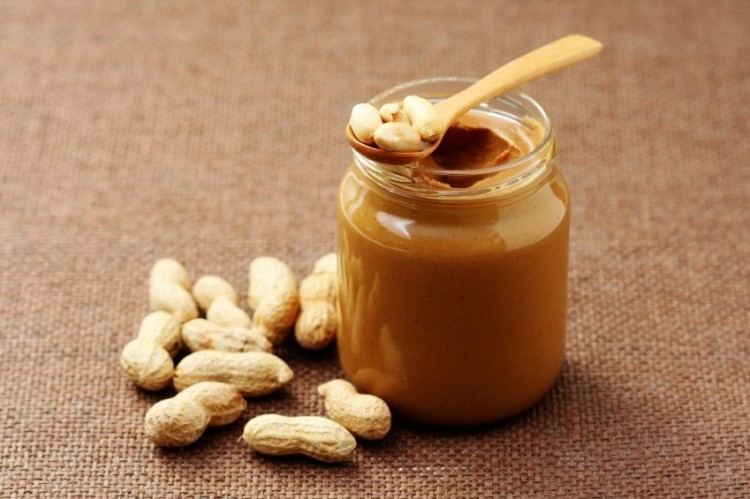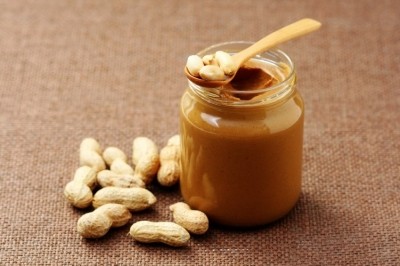Special edition: Nuts, pulses & legumes
Roasted and salted? Peanuts can be so much more, NPB says

Nuts as an overall category are riding high on the heels of a study published in November in the New England Journal of Medicine that tied daily nut consumption to a 20% reduction in overall mortality rates over a 30-year period (see here).
“We’ve been saying frequent consumption in small amounts daily ideally is a very healthy way to go and this study confirms it,” Bob Parker, president and CEO of the National Peanut Board, told FoodNavigator-USA.
Not that household penetration was much of a challenge for peanuts beforehand—as they’re one of the most popular (and affordable) nuts, available everywhere in various forms. But one variety that has yet to take hold in the consumer market is peanut flour. Partially defatted during processing and milled to a very fine texture, peanut flour is easily incorporated into soup, sauces or hot or cold beverages. Its high protein concentration and gluten-free profile make it increasingly attractive in baking applications as well, Sherry Coleman Collins, RD, National Peanut Board staff dietitian, said.
“Beyond energy bars, where we’re seeing huge opportunity for peanut flour is in baking, not just with gluten-free applications—though that is very important—but with nutritional applications as well, in terms of products like flatbreads. Peanuts serve needs of those who decide to reduce gluten or have gluten sensitivity or celiac disease. They’re also highly concentrated with protein by volume, and that’s one of the key drivers,” Collins said.
Peanut flour also works as a thickener and flavor agent in sauces and dips. “The flour blends beautifully with minimal liquid added to it,” Collins noted. “You can create essentially a peanut butter paste, but it doesn’t thicken as you add more. It’s great for applications like hummus or other dips, and adds protein, vitamins, minerals and fiber, but it doesn’t thicken like a smoothie.”
Consumers aren’t sure what to do with peanut flour; manufacturers don’t think it will sell
Beyond compensating for gluten in baked products, peanut flour presents few challenges from a formulation standpoint. The biggest missed opportunity, Parker said, is that no major brand is commercializing it as a consumer product.
“There’s been a huge amount of interest in peanut flour from consumers, but they don’t know where to get it. I think it’s a missed opportunity by some major brand marketer to bring it to market and onto the shelf,” he said.“Consumers aren’t sure what to do with it when they get it, and manufacturers aren’t confident it will sell. Still, I think that with consumers looking for ways to get protein into the diet, the time is right.”
Another category that has re-entered the spotlight is specialty spreads, such as nut butters and spreads. With roughly 90 to 95% penetration, peanut butter is by far the leader in nut spreads, though recent interest in chocolate hazelnut spread and bean spreads like hummus leaves the door open for more healthful options, Parker noted.
“Nut spreads and peanut butter have room to grow,” Parker said. “The category has become a hotbed for innovation. We’re seeing manufacturers introduce chocolate peanut butter spread as a more nutritional alternative to hazelnut spreads, with the health benefits of peanut butter and far less sugar.”
Hazelnut spreads 'by and large are chocolate frosting'
Indeed, Collins noted that hazelnut spreads are largely made up of fat and sugar, plus only about 50 hazelnuts per jar (compared to a jar of peanut butter, which comprises 500 peanuts).
“As a dietitian, people ask me about the benefits of different products,” she said. “I tell them to think about the ingredients driving what a product is. Hazelnut spreads by and large are chocolate frosting. If you look at the label, they’re mostly fat and sugar with a little nut in them. Chocolate peanut butter spread is peanut butter with a little sugar and cocoa added. It provides the consumer with a product they can feel is a little indulgent but still nutritionally sound.”
Making the exotic familiar and the familiar exotic
In many parts of the world, peanuts are considered a legume first and foremost, as they’ve historically played a central role in soups, stews and sauces, said Bob Coyle, managing director of the National Peanut Board’s marketing and advertising firm, LBVD. In this case, looking to the past can help ignite future innovation.
“When you look at the history of peanuts and go to origins of where it’s been indigenous for ages like South America, Asia and Africa, really what you see are wonderful soups—Peri-Peri peanut soup out of Africa or Thai soups that incorporate peanuts. Then in Pervian foods, peanuts are a mainstay ingredient alongside potatoes.”
Such recipes from around the globe are being pulled into vegetarian applications in foodservice today, as chefs incorporate peanuts as legumes in stews and salads, aromatic peanut oil for finishing and peanut paste for adding flavor and texture to BBQ sauce. “There are many different uses in the culinary world that include different applications far beyond roasted peanuts for crunch and texture,” Coyle said.
It’s in these more innovative applications where peanuts’ familiarity and consumer acceptance become paramount.
“There’s a strong consumer relationship with peanuts and peanut butter,” Coyle said. “That’s a big part of our heritage. We make the exotic familiar and the familiar exotic. In new product development, if there’s an anchor ingredient you’ll more likely say, ‘Wait a minute, I know peanuts. I’ll try this application.’ We love being that anchor ingredient. Peanuts are flavor carrier and can provide the underpinning to creative development.”















